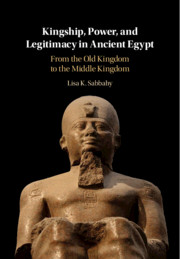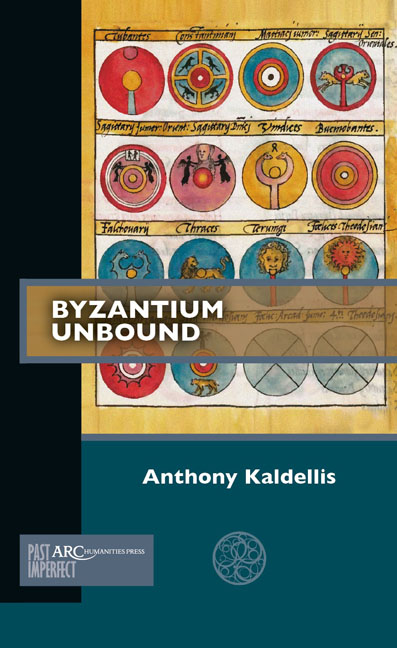Refine search
Actions for selected content:
23990 results in Ancient history
Chapter Four - The Early Middle Kingdom Reunifies Egypt
-
- Book:
- Kingship, Power, and Legitimacy in Ancient Egypt
- Published online:
- 26 November 2020
- Print publication:
- 10 December 2020, pp 121-137
-
- Chapter
- Export citation
Bibliography
-
- Book:
- Kingship, Power, and Legitimacy in Ancient Egypt
- Published online:
- 26 November 2020
- Print publication:
- 10 December 2020, pp 165-202
-
- Chapter
- Export citation
Introduction
-
- Book:
- Honor and Shame in Early China
- Published online:
- 13 November 2020
- Print publication:
- 10 December 2020, pp 1-16
-
- Chapter
- Export citation
3 - State-Based Honor in the Warring States
-
- Book:
- Honor and Shame in Early China
- Published online:
- 13 November 2020
- Print publication:
- 10 December 2020, pp 86-123
-
- Chapter
- Export citation
Index
-
- Book:
- Honor and Shame in Early China
- Published online:
- 13 November 2020
- Print publication:
- 10 December 2020, pp 243-258
-
- Chapter
- Export citation
Contents
-
- Book:
- Honor and Shame in Early China
- Published online:
- 13 November 2020
- Print publication:
- 10 December 2020, pp v-v
-
- Chapter
- Export citation
Introduction
-
- Book:
- Kingship, Power, and Legitimacy in Ancient Egypt
- Published online:
- 26 November 2020
- Print publication:
- 10 December 2020, pp 1-3
-
- Chapter
- Export citation
Copyright page
-
- Book:
- Honor and Shame in Early China
- Published online:
- 13 November 2020
- Print publication:
- 10 December 2020, pp iv-iv
-
- Chapter
- Export citation
Index
-
- Book:
- Kingship, Power, and Legitimacy in Ancient Egypt
- Published online:
- 26 November 2020
- Print publication:
- 10 December 2020, pp 203-208
-
- Chapter
- Export citation
2 - Acquired Honor in the Warring States
-
- Book:
- Honor and Shame in Early China
- Published online:
- 13 November 2020
- Print publication:
- 10 December 2020, pp 47-85
-
- Chapter
- Export citation
Works Cited
-
- Book:
- Honor and Shame in Early China
- Published online:
- 13 November 2020
- Print publication:
- 10 December 2020, pp 222-242
-
- Chapter
- Export citation

Kingship, Power, and Legitimacy in Ancient Egypt
- From the Old Kingdom to the Middle Kingdom
-
- Published online:
- 26 November 2020
- Print publication:
- 10 December 2020

Byzantium Unbound
-
- Published by:
- Amsterdam University Press
- Published online:
- 20 November 2020
- Print publication:
- 30 September 2019
-
- Book
- Export citation
2 - Legal Status, Citizenship and Ethnicity
-
- Book:
- Women and Society in the Roman World
- Published online:
- 06 November 2020
- Print publication:
- 19 November 2020, pp 68-123
-
- Chapter
- Export citation
1 - Family Life
-
- Book:
- Women and Society in the Roman World
- Published online:
- 06 November 2020
- Print publication:
- 19 November 2020, pp 15-67
-
- Chapter
-
- You have access
- Export citation
Index
-
- Book:
- Women and Society in the Roman World
- Published online:
- 06 November 2020
- Print publication:
- 19 November 2020, pp 342-346
-
- Chapter
- Export citation
5 - Religion
-
- Book:
- Women and Society in the Roman World
- Published online:
- 06 November 2020
- Print publication:
- 19 November 2020, pp 221-265
-
- Chapter
- Export citation
Maps
-
- Book:
- Women and Society in the Roman World
- Published online:
- 06 November 2020
- Print publication:
- 19 November 2020, pp xx-xxii
-
- Chapter
- Export citation
Frontmatter
-
- Book:
- Women and Society in the Roman World
- Published online:
- 06 November 2020
- Print publication:
- 19 November 2020, pp i-iv
-
- Chapter
- Export citation
Contents
-
- Book:
- Women and Society in the Roman World
- Published online:
- 06 November 2020
- Print publication:
- 19 November 2020, pp v-v
-
- Chapter
- Export citation
